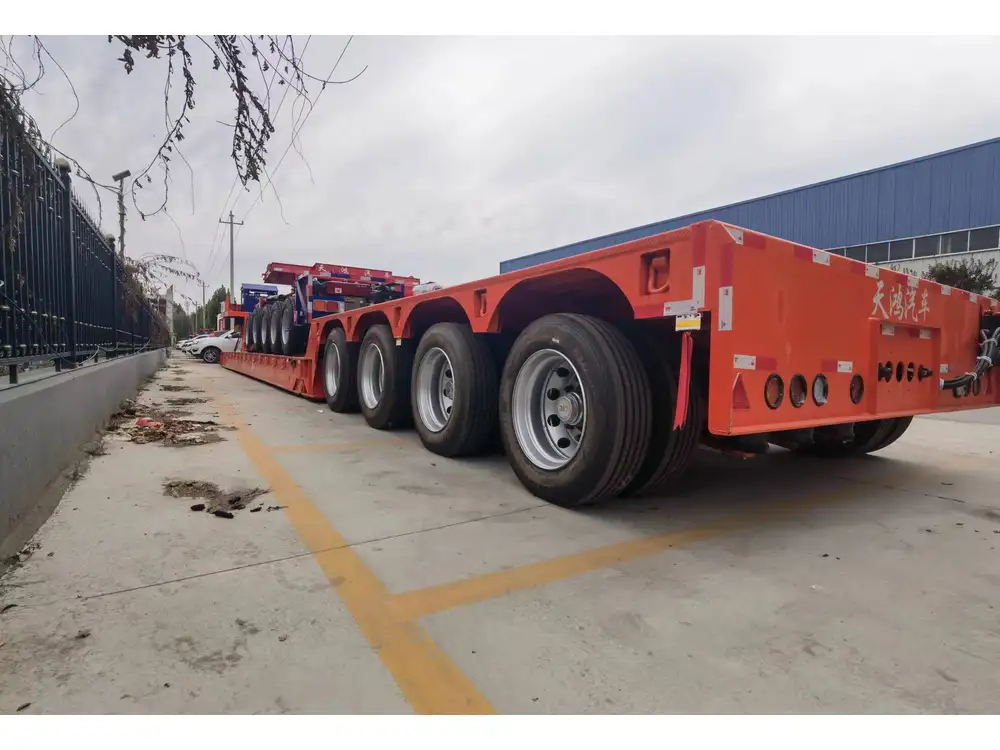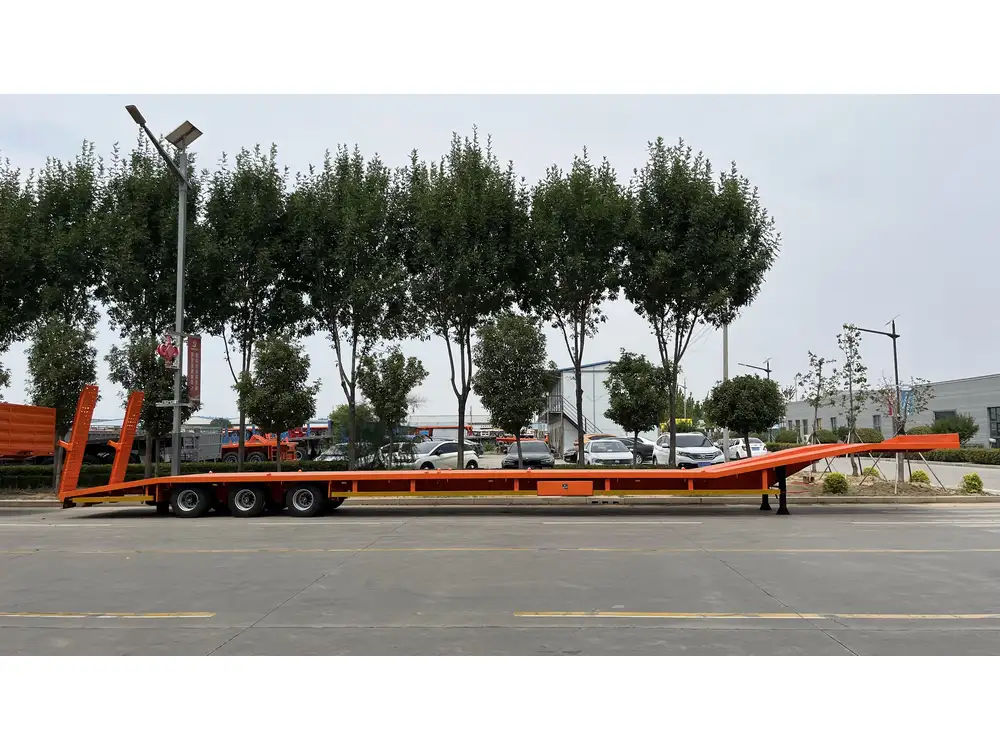Semi-trailer brakes are critical components of truck safety and performance. They ensure that vehicles can effectively decelerate and stop, even under heavy loads or challenging driving conditions. However, when these brakes lock up, it leads to severe safety issues, increased wear and tear, and costly repairs. Understanding the root causes of brake lock-up is essential for operators, fleet managers, and manufacturers alike.
Causes of Semi-Trailer Brake Lock-Up
1. Moisture Contamination
Moisture in brake systems can lead to corrosion of vital components, including the brake shoes and drums. This condition can cause the following issues:
- Rust Formation: Rust can create friction points that make it difficult for the brakes to function smoothly.
- Corrosion Buildup: Excessive corrosion may lead to the brake not releasing, causing lock-up.

Solutions:
- Regularly inspect and maintain brake components to prevent moisture intrusion.
- Use advanced seal technology to minimize exposure to contaminants.
2. Incorrect Brake Adjustment
Improperly adjusted brakes are a common cause of lock-up incidents. If the brake components are out of alignment or overly tight, they may engage too aggressively, especially when the vehicle is loaded.
Signs of Poor Adjustment:
- Uneven wear on brake pads or shoes.
- Increased stopping distance.

Solutions:
- Periodic brake adjustments according to manufacturer specifications.
- Ensure that all components are installed correctly and functioning as designed.
3. Worn or Damaged Components
Structural integrity is paramount. Worn or damaged components can lead to brake failure or lock-up. Key components to consider include:
- Brake Shoes/Pads: Worn shoes can cause uneven engagement.
- Drums/Rotors: Cracks or severe wear can lead to brake grabbing.
Solutions:
- Regular visual inspections.
- Replace worn components promptly to avoid serious failure.

4. Improper Weight Distribution
The load carried by a semi-trailer significantly affects braking performance. Uneven weight distribution can cause certain brakes to overwork, leading to lock-up.
Weight Distribution Concerns:
- Heavy loads at the rear may cause front brakes to engage harder.
- Uneven loading can put excessive strain on individual axles.
Solutions:
- Implement a thorough loading plan to ensure even weight distribution.
- Use load sensors to monitor weight distribution dynamically.

5. Faulty Brake System Components
Issues with electronic or hydraulic systems can lead to brake lock-up. Identifying these faults is crucial for the effective operation of the braking system:
- ABS Malfunction: A malfunction in the Anti-lock Braking System (ABS) can result in unintentional wheel lock-up.
- Hydraulic Leaks: Leaks in hydraulic lines can disrupt pressure and lead to inconsistent braking action.
Solutions:
- Execute periodic diagnostic checks on electronic and hydraulic systems.
- Replace any faulty sensors or hydraulics as soon as issues arise.
6. Excessive Adjusting Force
Sometimes, excessive force is applied to brake adjustments during service, leading to an overly aggressive brake system. This is particularly common in manual adjustments.

Signs of Excessive Force:
- Frequent lock-ups during normal braking.
- Increased pedal resistance.
Solutions:
- Educate technicians on proper adjustment techniques.
- Utilize automatic brake adjustment systems where feasible.
7. Environmental Factors
Environmental conditions play a significant role in brake performance. Variations in weather can directly impact how brakes respond:
- Cold Weather: Cold temperatures can thicken brake fluids or cause pads to stiffen.
- Heavy Rain or Snow: Wet conditions can lead to hydraulic issues or brake effusion.

Solutions:
- Utilize brake fluids rated for low-temperature performance.
- Regularly inspect and maintenance schedule during extreme weather conditions.
Preventive Measures
Regular Preventive Maintenance
Implementing a robust maintenance protocol is essential to preventing brake lock-up. Here’s a structured approach:
- Scheduled Inspections: Inspect brakes regularly—ideally every month.
- Component Replacement: Set guidelines for component replacement based on wear and tear.
- Brake Testing: Conduct frequent on-road testing of the brakes under various conditions.

Employee Training
Investing in technician training ensures that everyone understands brake systems and the importance of proper maintenance. Topics for training sessions could include:
- Brake system diagnostics.
- Proper adjustment and setup.
- Best practices for identifying early signs of wear.
Signs of Brake Lock-Up
Being vigilant can avert accidents before they occur. Here are common indicators of brake lock-up to watch for:
| Indicator | Description |
|---|---|
| Warning Lights | Activation of dashboard warnings associated with brake failure. |
| Increased Stopping Distance | Noticeably longer distances required to stop the vehicle. |
| Tire Skidding | Tires skidding or locking during attempts to slow down or stop. |
| Unusual Noises | Grinding or squeaking sounds while braking, indicating component issues. |
Recognizing these signs early can make all the difference in maintaining safety on the road.
Conclusion
Understanding what causes semi-trailer brakes to lock up is vital for ensuring safety, reducing operational costs, and optimizing vehicle performance. Regular inspections, proper maintenance, and technician training are fundamental to preventing issues related to brake lock-ups. By addressing factors such as moisture contamination, incorrect weight distribution, and faulty components proactively, operators can mitigate risks and ensure smooth, efficient braking performance.
For every operator and fleet manager, investing in the right practices can drastically enhance the safety and reliability of your semi-trailer fleet, leading to improved confidence on the road and reduced downtime due to brake-related failures.



